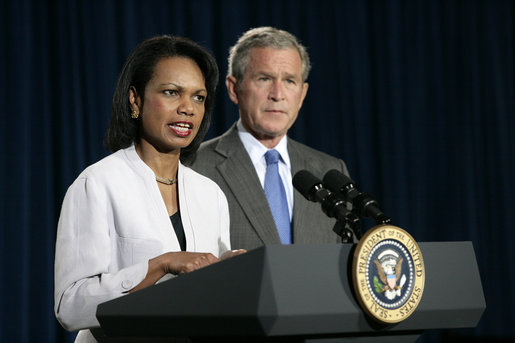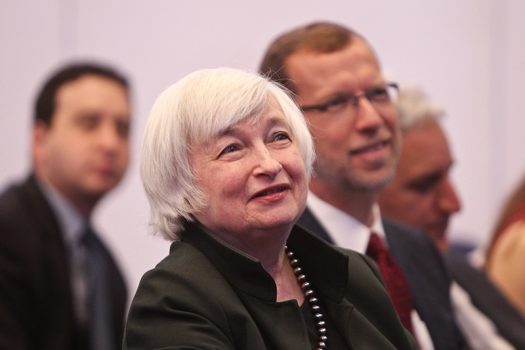The Movement to Get More Women into U.S. Politics
Led first by luminaries of the women’s movement, a drive to get more women into halls of political power has tackled social obstacles, campaign financing and candidate preparation. A stream of female firsts in U.S. politics has followed, and the number of women in elected offices has grown. But equal representation remains elusive. Will the 2018 election help close the gap?
Number of women in the House
Democrats
Republicans
Share of Congress
Number of women in Senate
Democrats
Republicans

A group of 320 women, including Gloria Steinem, Bella Abzug, Shirley Chisholm and Betty Friedan, in 1971 form the National Women’s Political Caucus to expand the number of women in political life. Dr. Ruth B. Mandel founds the Center for American Women and Politics at Rutgers University during the same year.

Shirley Chisholm in 1972 becomes the first woman and first African-American candidate for a major party’s presidential nomination, the Democrats. In 1968, she had become the first African-American woman elected to Congress. She represented New York in the House of Representatives for seven terms from 1969 to 1983.

Women’s Campaign Fund is founded in 1974 as the first national organization to financially support women candidates. A nonpartisan PAC, it is created to fund women candidates for office at all levels of government who are committed to finding “common ground” solutions to problems and support reproductive rights.

Ella T. Grasso of Connecticut in 1975 becomes the country’s first female governor not married to a previous governor. The capstone of a long and successful career in public service, she had previously served two terms in the House of Representatives, a dozen years as Connecticut’s secretary of the state, and 4 years in the Connecticut General Assembly, where she was its first woman to be elected floor leader.

Barbara Mikulski, the longest-serving woman in the history of Congress, is elected in 1977 to the House as a Democrat representing Maryland. In 1987, she is elected to the Senate and serves there until January 2017. She had previously been a member of the Baltimore City Council, a social worker and community organizer.

Also in 1977, Patricia Roberts Harris becomes the first black woman to hold a cabinet position, serving under President Jimmy Carter. She had previously made history in 1965 as the first African-American woman ambassador, serving in Luxembourg under President Lyndon B. Johnson.

Kansas Republican Nancy Kassebaum is elected to the Senate in 1978, becoming the first woman elected to a full term whose husband had not served in Congress. Hailing from a distinguished Kansas political family — her father was former Kansas governor and onetime presidential candidate Alf Landon — she had worked for Senator James B. Pearson and as vice president of the family-owned Kassebaum Communications.

Sandra Day O’Connor in 1981 becomes the first woman Supreme Court Justice, appointed by President Ronald Reagan and serving until she retired in 2006. Previously an elected official and judge in Arizona, she had also made history as the nation’s first female state Senate majority leader when she became the Republican leader in the Arizona Senate.

Geraldine Ferraro becomes in 1984 the first woman vice-presidential candidate for a major political party, the Democrats. An attorney, she had been a congresswoman from New York known for focusing on legislation to bring equity for women in wages and retirement plans. Before that, she led a new Special Victims Bureau for the Queens county district attorney.

Emily’s List is founded in 1985 by Ellen R. Malcolm to fund Democratic women congressional and gubernatorial candidates in favor of abortion rights. It focuses on raising money early in women’s candidacies to make them look more viable to the Democratic Party establishment and more attractive to other donors and supporters. Indeed, its name is an acronym for “Early Money Is Like Yeast” — it makes the dough rise.
Read More
Ileana Ros-Lehtinen, a Republican from Florida, in 1989 becomes the first Hispanic woman elected to Congress. She was born in Havana, Cuba, and fled with her family to Miami at age 8. She had been an educator until she became the first Hispanic woman to serve in the Florida House in 1982 and then in the state Senate in 1986.

In 1992, a record-breaking number of women are elected to Congress. After four women win Senate seats, lifting the total to seven, headline writers declare it “The Year of the Woman.” Among the victors is Carol Moseley Braun, an Illinois Democrat, who becomes the first woman of color elected to the Senate. The 103rd Congress (1993-1995) will have 54 women, up from 32.

Women’s Campaign School at Yale University is founded in 1993 by author and scholar Andrée Aelion Brook as an independent, nonpartisan, issue-neutral political campaign training and leadership program. A 5-day summer program at the Yale Law School, it aims to increase the number and influence of women public servants in the U.S. and around the world.

Janet Reno becomes the first female Attorney General in 1993. Nominated by President Bill Clinton, she serves until 2001. Previously, she had been Florida state attorney, elected five times to the post. Also in 1993, Ruth Bader Ginsburg is nominated to the Supreme Court by President Clinton.

Madeleine Albright is sworn in as the first female Secretary of State in 1997, and serves President Clinton until 2001. She had previously served as his ambassador to the United Nations and worked on President Carter’s National Security Council. The daughter of a Czech diplomat, she her family emigrated to the U.S. in 1948.

A group of Republican women, including members of Congress, in 1997 found Value In Electing Women Political Action Committee to elect qualified, viable Republican women to Congress by providing financial support. GOP women in the House and Senate remain active in the organization, but do not have operational roles.

The White House Project is founded in 1998 by Marie C. Wilson and Barbara Lee to increase female representation in American institutions. In 2004, it launches nonpartisan candidate training program Vote Run Lead. Lee also launches the Barbara Lee Family Foundation to advance women’s representation in American politics and contemporary art.

Rutgers’ CAWP, led by Debbie Walsh, in 1999 launches Ready To Run as a nonpartisan campaign training program for New Jersey women. Today, its state-based training model and the Ready To Run name are used by a network of partners, most other universities, in 19 states.

Elaine Chao in 2001 becomes the first Asian-American woman to serve in a presidential cabinet, assuming the position of secretary of labor for President George W. Bush. An immigrant to the U.S. as a child, she had previously been a deputy secretary of transportation and director of the Peace Corps under President George H. W. Bush and the president of the United Way of America. She is currently secretary of transportation under President Donald Trump.

Andrea Dew Steele in 2002 founds Emerge California to recruit, train and support Democratic women running for state and local offices primarily. In 2005, she takes the partisan model national as Emerge America, which today operates in 23 states, where it recruits candidates, provides in-depth in-person training and develops local support networks.
Read More
Condoleezza Rice in 2005 becomes the first African-American woman secretary of state. She serves President George W. Bush, who had previously appointed her national security advisor, making her the first woman to hold that position. Born and raised in the racially segregated South, she has built a long career as a foreign policy strategist and academic.

Nancy Pelosi, Democrat of California, in 2007 becomes the first woman to serve as speaker of the House. Prior to entering the House 3 decades ago, she had a career in party politics, including as elected party chair of the California Democratic Party. Today, she serves as the House minority leader.

Susannah Wellford in 2007 founds Running Start to inspire and prepare young women and girls to become political leaders. Its work is rooted in the notion that, with an earlier start in politics, women will climb higher on the leadership ladder and achieve more decision-making power.
Read More
Sarah Palin becomes the first Republican woman vice presidential nominee. As running mate to presidential nominee Arizona Senator John McCain, she was the first Alaskan on the national ticket of a major political party. She had become Governor of Alaska in 2006 and served until resigning in 2009. She had also been mayor of Wasilla and appointed chair of the Alaska Oil and Gas Conservation Commission.

A group of women led by Sandra B. Mortham in 2010 found the political action committee Maggie’s List to raise funds to elect more women who support fiscal conservatism, less government, more personal responsibility and strong national security. The organization is named for Margaret “Maggie” Chase Smith, the first woman elected to both houses of Congress.

Erin Loos Cutraro in 2011 founds the nonpartisan organization She Should Run to expand the talent pool of women candidates. It encourages women to run for political offices and offers resources and community for women leaders considering runs and their supporters.

Former Google executive Gisel Kordestani and Stanford University professors Steve Hilton and Adam Bonica in 2013 co-found Crowdpac, a nonpartisan online crowdfunding platform for candidates. Their mission is to strengthen democracy by taking big money out of politics by giving candidates an easy way to raise small contributions. Women account for 35 percent of crowdfunding candidates on the site.
Read More
Janet Yellen in 2014 becomes the first woman chair of the Federal Reserve, the U.S.’s central bank, after being nominated by President Barack Obama. She had previously been vice chairwoman of the Fed and, prior to that, the president and CEO of the Federal Reserve Bank of San Francisco, chair of the White House Council of Economic Advisers under President Bill Clinton, and a professor at the University of California at Berkeley.

Erin Vilardi in 2014 spins out VoteRunLead, a nonpartisan candidate and leadership training nonprofit, after the White House Project closes its doors. With in-person sessions, online resources and social-media-based alumnae support networks, it works to deliver practical campaign and leadership training to women at scale, regardless of political experience, office sought or political party.
Read More
Hillary Rodham Clinton in 2016 becomes the first woman to receive the presidential nomination from a major political party, the Democrats. She had served as secretary of state and senator from New York. And as the wife of President Bill Clinton, she served as first lady of the United States and first lady of Arkansas. Previously, she was a practicing lawyer, law professor and activist. In 2017, she founds Onward Together to encourage progressives to engage in civil life and run for office.

Anticipation for the 2018 midterm elections is running hot, after surprisingly high-energy 2017 off-year races that included many women candidates and delivered an array of state and local “firsts” for Latina, African-American, Asian-American and transgender women. Will 2017 prove a bellwether for 2018, when many more offices — federal, state and local — up for election? Could 2018 be a different kind of “Year of the Woman”? Join us all year, as we follow the campaigns of 15 fascinating women, each aided by female-founded organizations leading the movement for political parity, in our Running Women project.
